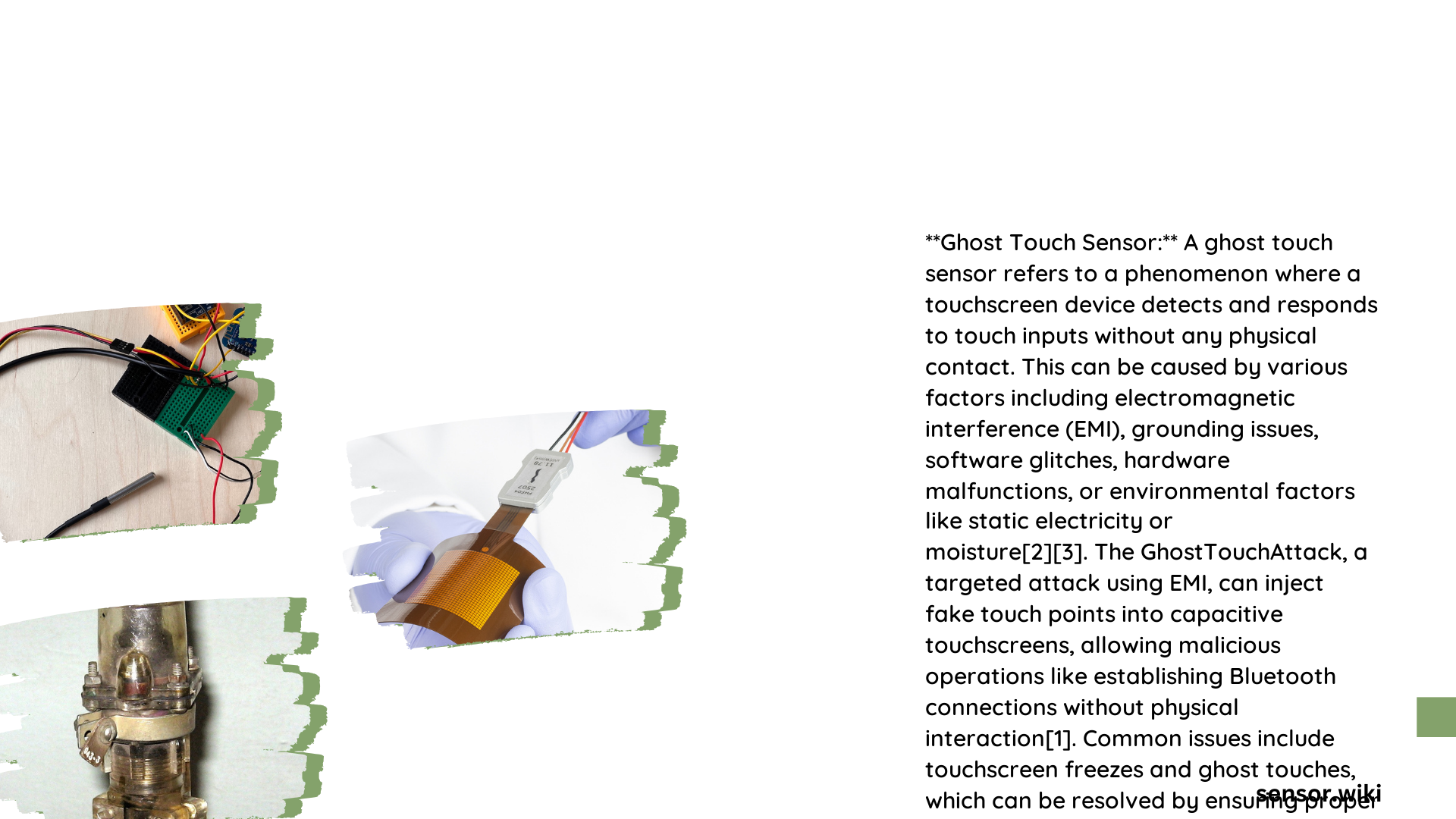Ghost touch sensors represent a perplexing technological phenomenon where touchscreen devices register phantom touches or interactions without actual human contact. These unexpected screen responses can disrupt user experience, causing random app openings, scrolling, or unintended actions. Understanding the underlying mechanisms and potential solutions is crucial for maintaining optimal device functionality and user satisfaction.
What Causes Ghost Touch Sensor Malfunctions?
Environmental Triggers for Phantom Interactions
Ghost touch sensor issues often emerge from complex interactions between hardware, software, and environmental conditions. Key environmental factors include:
- Static Electricity Interference
- Dry environments increase electrostatic charge
- Higher risk in low-humidity conditions
-
Can cause unpredictable screen responses
-
Temperature Sensitivity
- Extreme temperatures impact touchscreen conductivity
- Cold environments may reduce sensor responsiveness
- Heat can cause temporary calibration disruptions
Hardware Vulnerability Factors
| Component | Potential Ghost Touch Risk | Mitigation Strategy |
|---|---|---|
| Digitizer | High vulnerability | Regular screen protector usage |
| Proximity Sensor | Moderate risk | Periodic sensor calibration |
| Screen Connector | Low to moderate | Avoid physical device stress |
How Do Software Conflicts Trigger Ghost Touches?
Software-related ghost touch sensor problems often stem from:
- Background Application Overload
- Multiple concurrent applications
- High memory consumption
-
Processor strain
-
Firmware Inconsistencies
- Outdated operating system
- Incomplete software updates
- Kernel-level communication errors
Diagnostic Strategies for Ghost Touch Detection

What Are Effective Troubleshooting Techniques?
Resolving ghost touch sensor issues requires systematic investigation:
Initial Diagnostic Steps
- Disconnect charging cable
- Restart device
- Clear background applications
- Check for system updates
Advanced Diagnostic Approach
- Screen Sensitivity Test
- Use built-in diagnostic tools
- Perform touch response mapping
-
Identify irregular input patterns
-
Hardware Inspection
- Examine physical screen integrity
- Check for microscopic damage
- Verify connector stability
Can Professional Repair Solve Ghost Touch Problems?
Professional intervention becomes necessary when:
– DIY solutions prove ineffective
– Persistent phantom interactions occur
– Physical screen damage is suspected
Repair Considerations
- Digitizer replacement cost: $50-$200
- Average repair time: 30-90 minutes
- Warranty implications
Prevention and Maintenance Recommendations
How to Minimize Ghost Touch Sensor Risks?
Proactive strategies include:
– Use high-quality screen protectors
– Maintain optimal device temperature
– Avoid extreme environmental conditions
– Update software regularly
– Handle device with care
Best Practices for Long-Term Device Health
- Periodic professional diagnostics
- Gentle cleaning techniques
- Controlled charging practices
- Mindful storage conditions
Technical Insights into Ghost Touch Mechanisms
Ghost touch sensors operate through complex capacitive or resistive technologies. Microscopic disruptions in electrical conductivity can trigger phantom interactions, making precise diagnosis challenging.
Key Technical Considerations
- Touchscreen layer sensitivity
- Electrical signal interpretation
- Noise reduction algorithms
- Calibration precision
Conclusion
Understanding ghost touch sensor dynamics requires a holistic approach combining technical knowledge, systematic diagnostics, and preventive maintenance. By recognizing potential triggers and implementing strategic solutions, users can effectively manage and mitigate phantom screen interactions.
